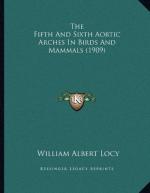|
This section contains 581 words (approx. 2 pages at 300 words per page) |

|
The aortic arch describes the large bend in the ascending aorta after it leaves the heart. Running behind the sternum and the manubrium near, at about the level of the second rib (sternocostal cartilage), the ascending aorta makes a sweeping, double twisting bend toward the back (dorsal) surface of the body. The twisting and bending ultimately results in a generalized 180-degree bend or arch (aortic arch) that transforms into the descending aorta. Several important arteries that supply oxygenated blood to the neck and head have their origin in branches (trunks) off the aortic arch.
During the bending of the aortic arch, normally, three branches of the aorta split off from the trunk of the aortic arch. The three branches--the brachiocephalic trunk aorta, the left common carotid artery, and the left subclavian artery--usually split from the aortic arch as three separate arterial trunks, arising from different positions...
|
This section contains 581 words (approx. 2 pages at 300 words per page) |

|


